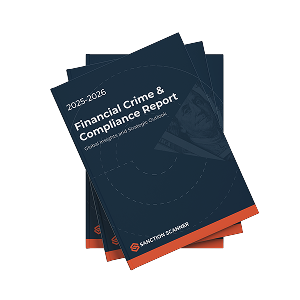Filing a Suspicious Activity Report for cryptocurrency transactions requires a thorough understanding of both regulatory requirements and the unique characteristics of digital currencies. Compliance officers must identify suspicious activities, gather necessary documentation, and ensure accurate and timely reporting to authorities.
What is a Suspicious Activity Report (SAR)?
A SAR is a document that financial institutions and other regulated entities file with authorities to report potential instances of money laundering, fraud, or other financial crimes. SARs serve as a critical tool for law enforcement and regulatory agencies to identify and investigate suspicious activities.
In the context of cryptocurrency transactions, SARs help track unusual patterns, large unexplained transfers, and activities involving high-risk jurisdictions. Compliance officers must be vigilant in recognizing these signs, documenting their findings, and submitting SARs accurately and promptly to contribute to the broader effort of combating financial crime.
Identifying Suspicious Cryptocurrency Transactions
Compliance officers must be familiar with the common red flags associated with digital currencies to detect potential financial crimes. Advanced analytics and transaction monitoring tools can aid in identifying anomalies and patterns indicative of suspicious activities.
By staying informed about emerging threats and maintaining robust monitoring systems, financial institutions can enhance their ability to detect and report suspicious cryptocurrency transactions, contributing to the overall effectiveness of their anti-money laundering (AML) and countering the financing of terrorism (CFT) programs.
Common Red Flags in Cryptocurrency Transactions
Common red flags in cryptocurrency transactions include:
- Unusual Transaction Patterns: Unusual transaction patterns, such as frequent transfers of small amounts followed by large withdrawals, can indicate attempts to avoid detection. Compliance officers should monitor for inconsistencies in transaction behavior that deviate from the customer's typical activity, as these may suggest efforts to obscure illicit financial activities.
- Large and Unexplained Transfers: Large and unexplained transfers, particularly those that do not align with the customer's known financial profile or business activities, can be indicative of money laundering or other financial crimes. Compliance officers should scrutinize significant transfers without clear economic justification, as these may represent attempts to move illicit funds.
- Transactions Involving High-Risk Jurisdictions: Transactions involving high-risk jurisdictions, known for lax regulatory oversight or associations with financial crimes, are a significant red flag. Compliance officers should exercise heightened scrutiny when processing transactions connected to these regions, as they may be indicative of attempts to launder money or finance illegal activities.
- Preparing to File a SAR for Cryptocurrency Transactions: Preparing to file a SAR for cryptocurrency transactions involves gathering necessary information, ensuring data accuracy, and maintaining confidentiality. Compliance officers must collect comprehensive documentation, verify the accuracy of the information, and follow best practices for securing sensitive data. Proper preparation ensures that SARs are detailed, accurate, and useful for regulatory and law enforcement agencies. By adhering to these practices, financial institutions can enhance their SAR processes and contribute to effective financial crime prevention. Implementing robust data management and security protocols is essential to safeguard information and maintain compliance with regulatory requirements.
- Gathering Necessary Information and Documentation: Gathering necessary information and documentation involves collecting transaction records, customer identification, and any relevant communications or patterns. Compliance officers should ensure all data is comprehensive and organized, providing a clear picture of the suspicious activity. Accurate documentation supports thorough investigations and regulatory compliance.
- Ensuring Data Accuracy and Completeness: Ensuring data accuracy and completeness is crucial for effective SAR filing. Compliance officers must verify all information, cross-check details, and ensure that the SAR contains all necessary data. Accurate and complete SARs provide valuable insights for regulatory and law enforcement agencies, aiding in the detection and prevention of financial crimes.
- Best Practices for Maintaining Confidentiality and Security: Maintaining confidentiality and security involves implementing robust data protection measures, limiting access to sensitive information, and training staff on data privacy protocols. Compliance officers should use secure communication channels and storage solutions to protect SAR-related information, ensuring that it remains confidential and secure throughout the reporting process.
How to File an Effective SAR for Cryptocurrency Transactions
Filing an effective SAR for cryptocurrency transactions involves accessing the appropriate filing system, ensuring accurate and detailed reporting, and adhering to regulatory timelines. Compliance officers should familiarize themselves with the SAR filing platforms used by their jurisdiction's regulatory bodies, such as Financial Intelligence Units (FIUs). Detailed and timely submissions enhance the usefulness of SARs for investigations. Regular training and updates on regulatory requirements help compliance officers stay informed and proficient in SAR filing procedures, contributing to the overall effectiveness of the institution's AML and CFT efforts.
How to Access the SAR Filing System
Accessing the SAR filing system requires compliance officers to register with the appropriate regulatory platform, such as the Financial Crimes Enforcement Network (FinCEN) or their jurisdiction's FIU. Once registered, officers can submit SARs through secure online portals, ensuring compliance with reporting requirements and facilitating effective communication with regulatory and law enforcement agencies.
Common Mistakes to Avoid When Filing SARs for Cryptocurrency Transactions
Common mistakes in filing SARs for cryptocurrency transactions include incomplete or inaccurate information, delayed reporting, and failing to recognize suspicious activities. Avoiding these errors enhances the effectiveness of SARs and supports regulatory and law enforcement efforts. Regular training and adherence to best practices can help mitigate these risks and improve the quality of SAR submissions, contributing to the institution's overall compliance and financial crime prevention strategies.
- Incomplete or Inaccurate Information: Incomplete or inaccurate information in SARs can hinder investigations and reduce the effectiveness of the report. Compliance officers must ensure all relevant details are included and accurate, cross-checking data to prevent errors. Thorough and precise reporting enhances the value of SARs for regulatory and law enforcement purposes.
- Delayed Reporting: Delayed reporting of suspicious activities can impede timely investigations and regulatory actions. Compliance officers must adhere to regulatory timelines for SAR submission, typically within 30 days of detecting suspicious activity. Prompt reporting ensures that potential financial crimes are identified and addressed swiftly, supporting effective AML/CFT efforts.
- Failing to Recognize Suspicious Activities: Failing to recognize suspicious activities can result in missed opportunities to prevent financial crimes. Compliance officers should stay informed about emerging threats and red flags specific to cryptocurrency transactions. Regular training and advanced monitoring tools can help identify suspicious activities and ensure timely and accurate SAR filing.
Transaction Monitoring Tool by Sanction Scanner
The Transaction Monitoring Tool by Sanction Scanner is an advanced solution designed to enhance the detection of suspicious activities in cryptocurrency transactions. It offers real-time screening of transactions against updated sanction lists, customizable rules to fit specific institutional needs, and comprehensive coverage of global sanction lists, PEP lists, and adverse media. The tool generates automated alerts for suspicious transactions and provides a user-friendly interface for ease of use by compliance officers. By integrating this tool, financial institutions can improve their compliance processes, reduce the risk of financial crimes, and ensure effective management of SAR filings.
To effectively deal with suspicious activities for cryptocurrency transactions, contact us or request a demo today.





